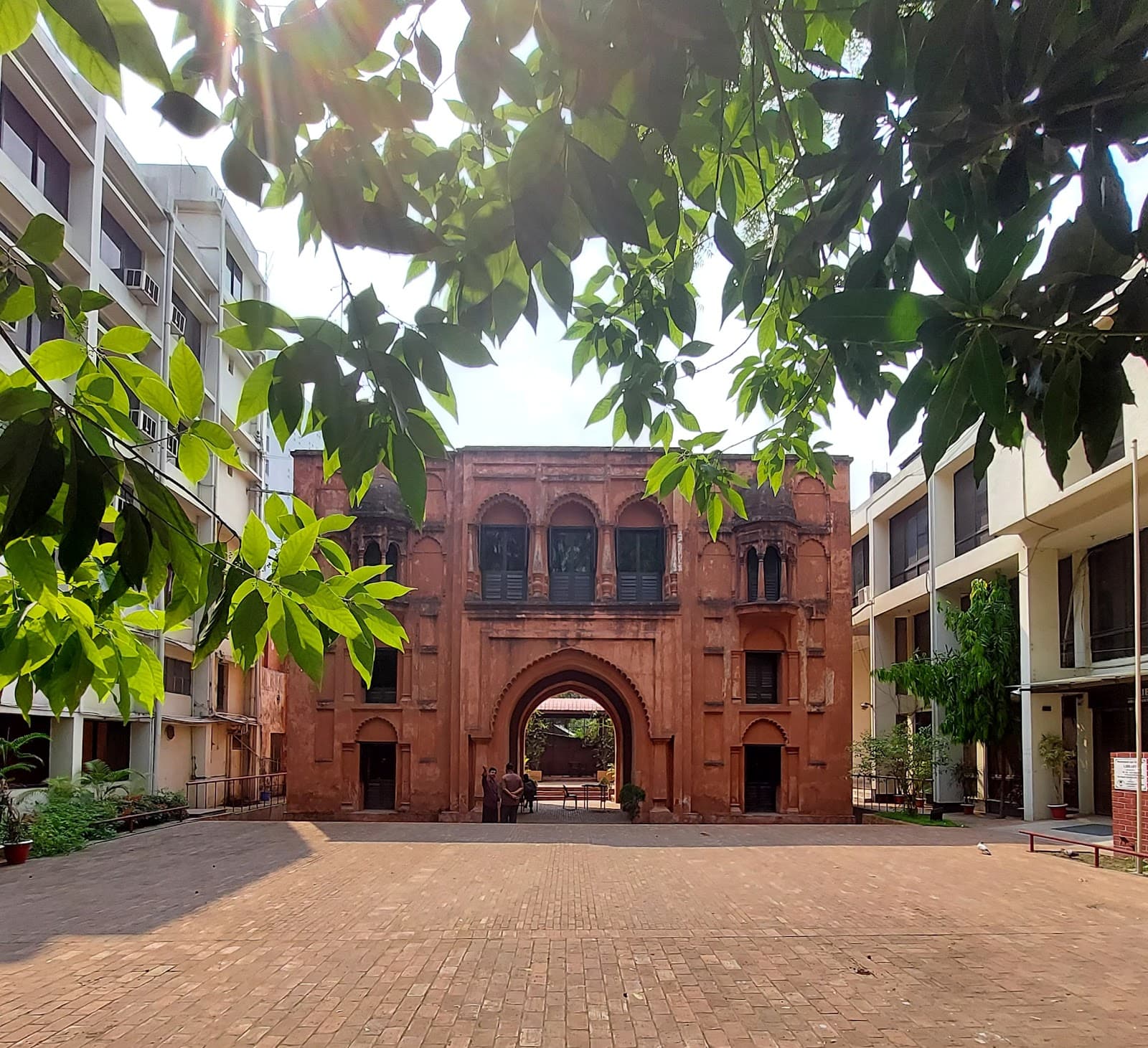
Nimtoli Deuri
A historic gatehouse and remnant of Nimtoli Palace, now housing the Asiatic Society Museum, showcasing Dhaka's rich heritage.
Highlights
Must-see attractions
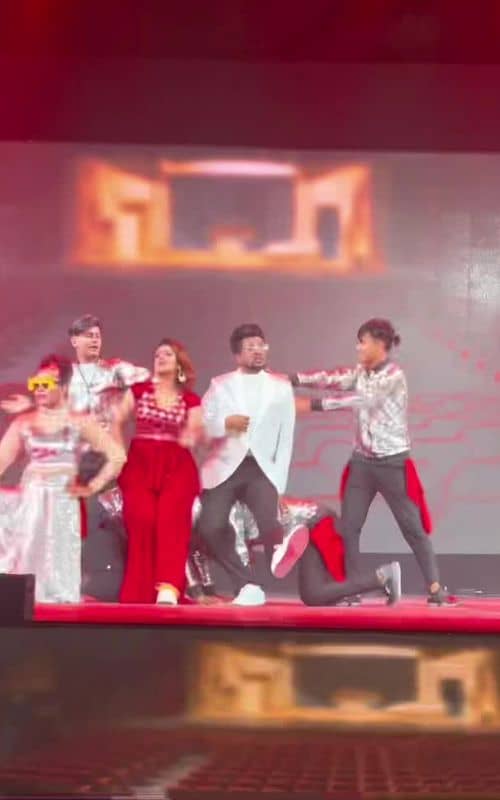
Social
From TikTok & Reddit
Best Time
Fewer crowds, more peaceful

Nimtoli Deuri
Best Time
Fewer crowds, more peaceful
Highlights
Must-see attractions
A historic gatehouse and remnant of Nimtoli Palace, now housing the Asiatic Society Museum, showcasing Dhaka's rich heritage.
"A fascinating glimpse into Old Dhaka's past, blending history, architecture, and culture."
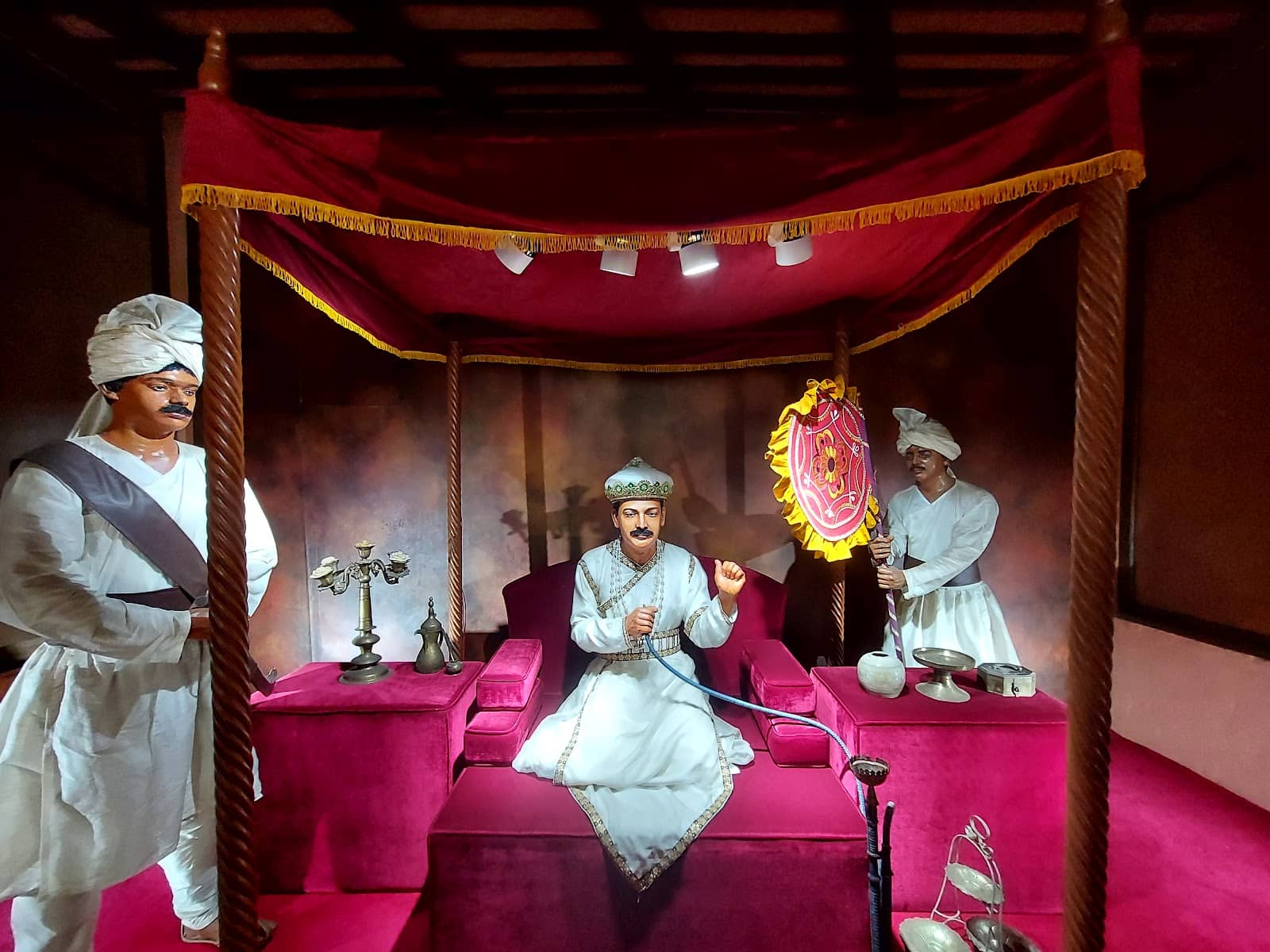
Ask for Directions
Locals and guards are helpful! Just ask for 'Nimtoli Deuri' or 'Asiatic Society Museum' if you get lost. :world_map:
Explore the Museum
Don't just see the gate; the Asiatic Society Museum inside holds fascinating historical artifacts. :museum:
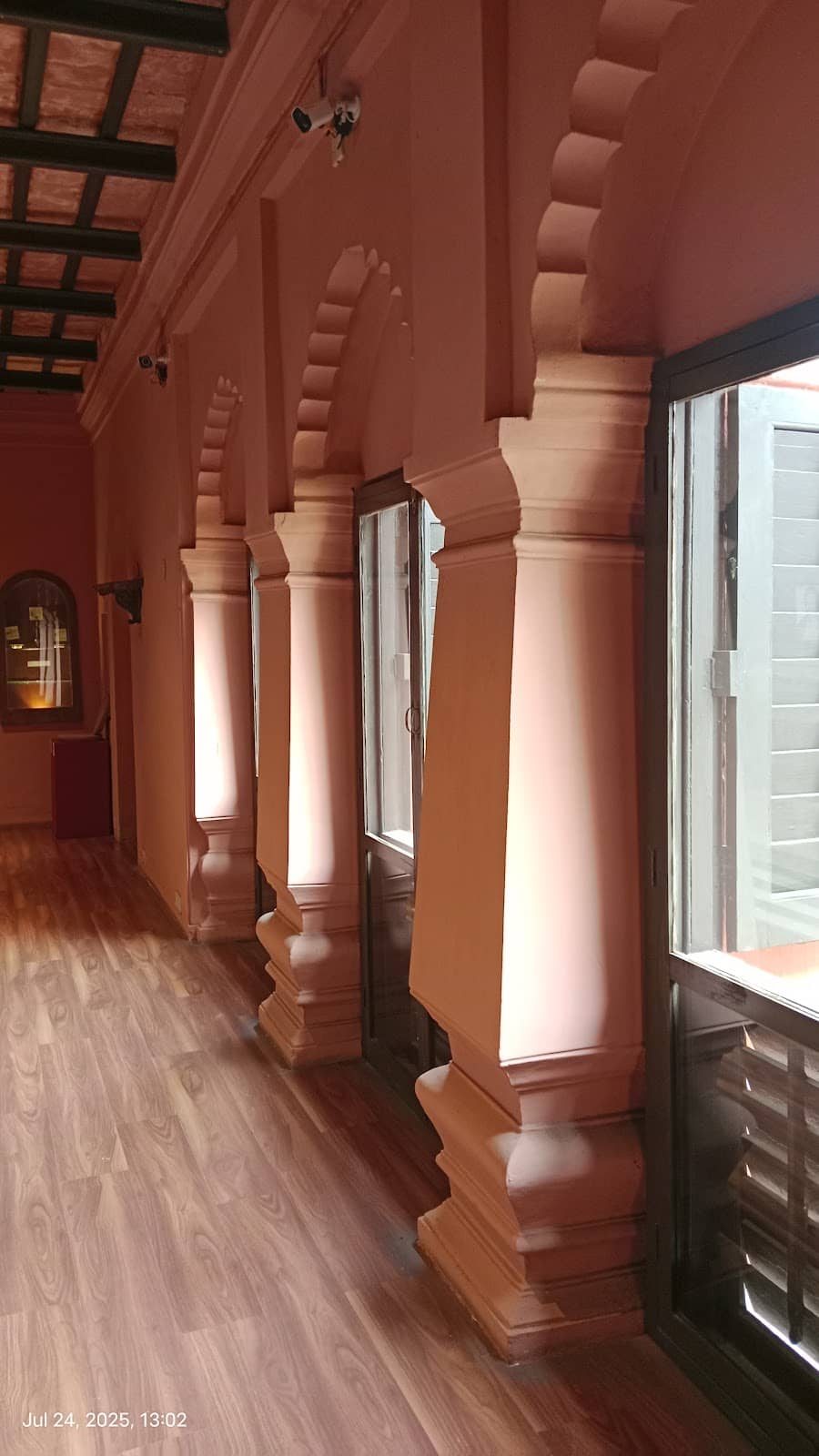
Highlights
Discover the most iconic attractions and experiences

The Nimtoli Gatehouse
Asiatic Society Museum Premises
The imposing archway, a remnant of the Nimtoli Palace, showcases a blend of Mughal and European architectural styles.

Asiatic Society Museum
Within the Nimtoli Deuri complex
Explore artifacts and learn about the history of Dhaka and its Nawabs within this heritage museum.
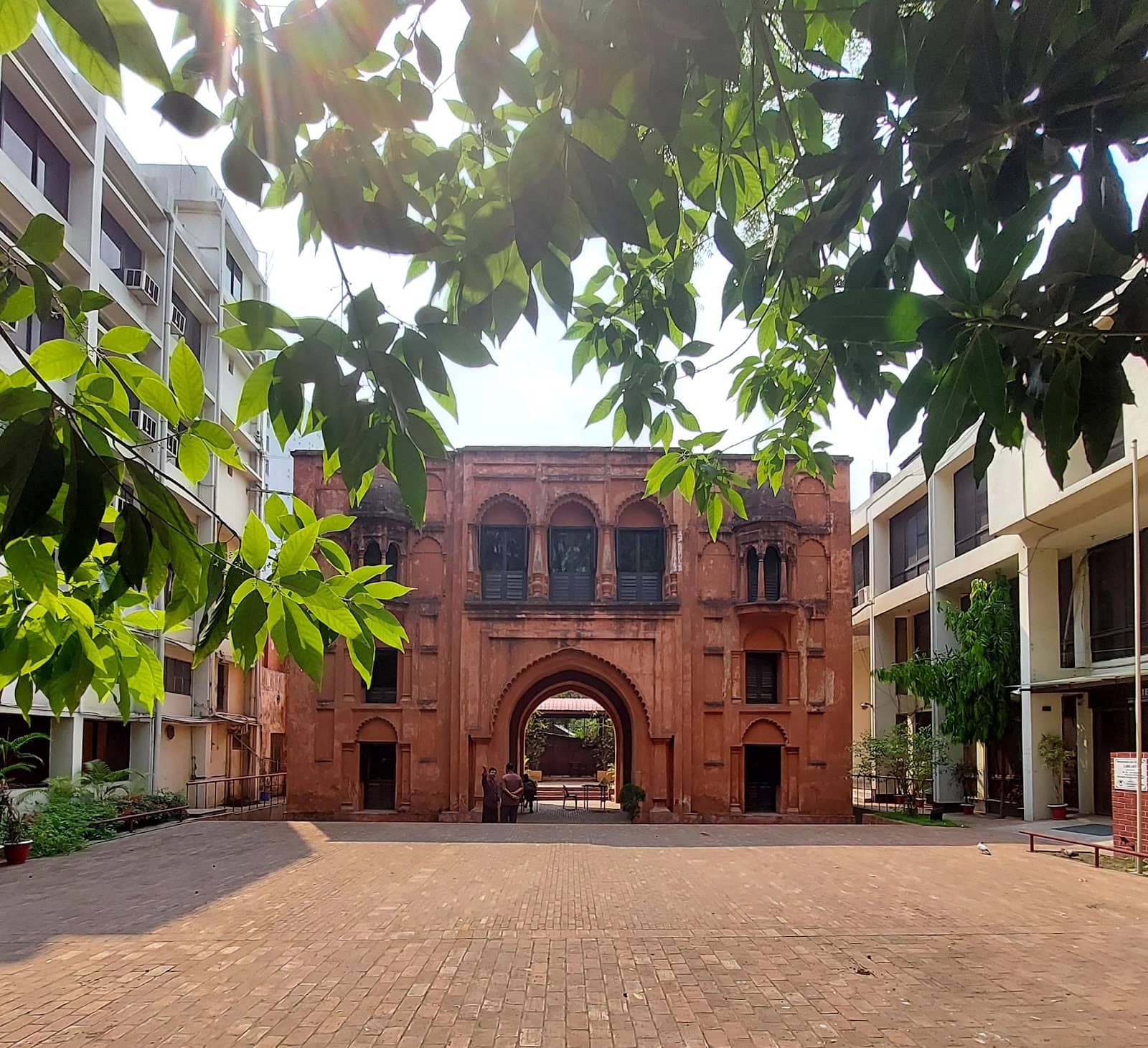
Architectural Fusion
Nimtoli Deuri structure
Admire the unique blend of Mughal heritage with European influences, evident in its arches and Belkney tongues.
Plans like a pro.
Thinks like you
Planning Your Visit
Finding Nimtoli Deuri
A Glimpse into History
Best Times
Insider Tips
from TikTok, Instagram & Reddit
Ask for Directions
Locals and guards are helpful! Just ask for 'Nimtoli Deuri' or 'Asiatic Society Museum' if you get lost. :world_map:
Explore the Museum
Don't just see the gate; the Asiatic Society Museum inside holds fascinating historical artifacts. :museum:
Capture the History
The architecture is stunning! Great for photography enthusiasts looking for unique heritage shots. :camerawithflash:
Understand the Context
Learn about the palace's history and the earthquake that changed its fate. It adds depth to your visit. :books:
Tips
from all over the internet
Ask for Directions
Locals and guards are helpful! Just ask for 'Nimtoli Deuri' or 'Asiatic Society Museum' if you get lost. :world_map:
Explore the Museum
Don't just see the gate; the Asiatic Society Museum inside holds fascinating historical artifacts. :museum:
Capture the History
The architecture is stunning! Great for photography enthusiasts looking for unique heritage shots. :camerawithflash:
Understand the Context
Learn about the palace's history and the earthquake that changed its fate. It adds depth to your visit. :books:
What Travellers Say
Reviews Summary
Visitors praise Nimtoli Deuri for its historical significance and unique architecture, noting its role as a remnant of the grand Nimtoli Palace and its current function as the Asiatic Society Museum. While some find it a bit challenging to locate, the experience of exploring this piece of Old Dhaka's heritage is generally well-received.
"Nimtali Deuri is a remainder of the Nimtali Palace complex which was built in 1765-66 for the accommodation of the Naim Nazim family of Dhaka. After the East India Company obtained the Diwani in 1765 the administration of Dhaka came under their control. The fort is still much beautiful and now used as the asiatic socity museum...The structural Foundation of the deuri is so rich.."
Sheikh Fardin Oyon
"You may have a little trouble finding this Nimtoli Deuri as it is inside the (Bangladesh Asiatic Society). Just ask the guard at the main gate of the Asiatic Society and they will let you in.
Nimtali Deuri is originally the main gate of the now-defunct Nimtali Palace, where the guards used to stay, which is better called the gate house."
The bright Cave
"The Nimtali Deuri or Nimtali Gate was originally the western archway of the historic Nimtali Palace. The palace was built in 165-7 under the care of Captain Archibald Swinton, the first British military ruler of Dhaka, to house Nawab Jasrat Khan, the Naib Nazim (Deputy Governor) of Dhaka. Until 1843, the palace was used as the residence of Jasrat Khan's successors Nawab Hasnat Jung and Nawab Nusrat Jung. The Nimtali Palace was completely destroyed by the earthquake of 1897, but the Deuri building remained relatively intact. The ownership of the palace has changed several times since then. The southern part of the palace was purchased by a Brahmin sergeant named Gopikrishta and established Bidhan Palli. Later a nineteenth century Farashganj merchant (Ruplal Das) bought land in the palace area. In 1913, Lord Carmichael acquired the land from the Nawabs to establish a museum, and the Dhaka Museum was established there.
Nimtali Palace was built across the vast area of Nimtali Mahalla and the High Court building. In Nile, Nimtali Deuti is currently standing in the premises of Bangladesh Asiatic Society. As part of the original palace, Nimtali Deadhi, Bariduri Palace (old museum building) and Nawabi Dighi (located in the mosquito of Dhaka University) or the pond of the country, that the palace was mainly built in the Mughal architecture. There were many buildings in the palace of the palace, multiple entrance, internal covenant, personal residence, prayer room, Hammam, water supply, the soldiers of the soldiers, ponds, garden, etc. Chishan of England, the Kishkar's Kishkar, Kishkar, Khutta, has given some details of the palace. In 1824 he visited Nimtali Palace during Dhaka tour and wrote details about his texts. Although the palace was in the prachanda. He wrote '... a very generous (nimtal gate) whose tallest branches are open, where there is no military or playing in military, which was the symbol of sovereign power .... However, even if there is no power of Nawab, then the company government submits the powder to the Nawab '.
The ethnic measure of the dragon and polygonal is the 15th of the east, the 8.2 meters in the north-south, but on the west side 8.13 meters long. It is in the middle of 5 m. A way to the wide arched. In the north side of the road, there are two rooms on the north side and 1 rooms on the south and on the top. The south rooms and north side of the north side square and its measurements 3.38 square meters. The relatively small room of the north west side of the north side is 2.74 meter x 1.82 meters. There are two rooms in the bottle. Each cell measurement 3.38 m x 3.38 m .. The two sides are in the same election in the same number. In the midst of the east large large hall of 13 e77 m. x 8.30 m .. The other room measurement 8.22 m x 4.14 m .. This room is the measure of open vertebrat (2) to the front of the two moth-high (high) in the floor of the two points. x 1.70 m .. The instanthoys have been used in the epothent, the iron, brick, the sound and stone. The width of the Mughal heritage contract with the influential influential of the Western influences of the Mughal heritage. Besides, the use of Belkney tongues of the hanging has established it as the first standard example of the European style of intrusion in Dhaka. In 1898, the earthquake was a huge loss of the building, especially its poop kupolaches were broken.
Debola's building as a cabinet's tabernacle. Later, Dutri's building was used as a home of Dhaka University teachers and officials. In 1952, the Asiatic Society of Pakistan was established and its office was established in a cell in Debi. Later, the entire Debar building bought the Asiatic Society and the form of the formation of the Society's Office, Library and Seminar is the 1982. In 1983, the Society's Office and Library Devi were transferred to the current building.
As the current condition of Dewi is very grassed, 2010-2011 Asiatic Society took the work to make it necessary to convert it to a permanent museum."
Bashir Ul Islam
What People Like
What People Dislike
Frequently Asked Questions
🚇 🗺️ Getting There
Nimtoli Deuri is located within the premises of the Bangladesh Asiatic Society. If you're having trouble finding it, ask the guards at the main gate of the Asiatic Society for directions. It's a well-known landmark within the historic Old Dhaka area.
You can take a rickshaw or a local bus to reach the vicinity of the Asiatic Society in Old Dhaka. From there, it's a short walk.
While it's within a society's premises, access is generally granted to visitors interested in history. Just be polite and ask the guards.
Parking can be challenging in Old Dhaka. It's advisable to use ride-sharing services or public transport to avoid parking hassles.
It's located near the Dhaka University area and is a significant part of the historic Old Dhaka landscape.
🎫 🎫 Tickets & Entry
Nimtoli Deuri itself is an open structure, but it's part of the Asiatic Society Museum. There might be a nominal entry fee for the museum.
The opening hours can vary. It's best to check with the Asiatic Society directly or visit during standard museum hours, typically weekdays.
While the Deuri structure is always accessible, the museum's operating hours might be limited on weekends. It's advisable to confirm beforehand.
Generally, there's a small entry fee for the museum to help with its upkeep. Confirm the current charges upon arrival.
Photography rules can vary. It's best to check the museum's policy upon entry, but generally, exterior shots are fine.
🎫 🏛️ Onsite Experience
It's famous as the historic gatehouse of the Nimtoli Palace and now houses the Asiatic Society Museum, showcasing Dhaka's heritage.
The museum displays artifacts related to the history of Dhaka, its Nawabs, and the region's cultural heritage.
Yes, you can get a good sense of its historical significance and architecture with a relatively short visit, especially if you focus on the gate.
It exhibits a fascinating blend of Mughal architectural elements with European influences, making it a unique structure.
Guided tours might not be formally offered, but the museum staff can often provide insights into the history and exhibits.
📸 📸 Photography
The main archway of the Deuri itself is a prime spot. The surrounding grounds of the Asiatic Society also offer good angles.
Absolutely! The ancient architecture and its historical context make it a fantastic location for capturing heritage and old Dhaka vibes.
Drone usage is generally restricted in urban areas and around historical sites. It's best to avoid it to prevent issues.
Early morning or late afternoon light can create beautiful shadows and highlight the architectural details.
Focus on the intricate details of the arches and the overall grandeur of the gatehouse against the sky.
For Different Travelers
Tailored advice for your travel style
👨👩👧 Families with Kids
Tips for families: Keep the visit relatively short to maintain children's attention. Focus on the most visually interesting artifacts in the museum. Ensure comfortable walking shoes, as Old Dhaka can involve a lot of walking.
📸 Photography Enthusiasts
Photography tips: Visit during the golden hours (early morning or late afternoon) for the best light. Experiment with different angles to showcase the scale and architectural nuances. Remember to be respectful of the site and any ongoing activities within the Asiatic Society premises.
🏛️ History Buffs
For history buffs: Take your time to read any available information panels at the museum. Consider researching the history of the Naib Nazims of Dhaka beforehand to enhance your understanding.
Deep Dives
In-depth insights and expert knowledge
The History of Nimtoli Deuri
The palace met a tragic end, largely destroyed by a devastating earthquake in 1897. However, the Nimtoli Deuri building, though damaged, remained relatively intact. Over time, ownership changed hands, and parts of the land were acquired for various purposes, including the establishment of the Dhaka Museum in 1913. The Deuri building itself has served various roles, including housing Dhaka University teachers and officials, before the Asiatic Society of Pakistan (now Bangladesh Asiatic Society) established its office there in 1952.
Today, the Nimtoli Deuri stands as a proud remnant of Dhaka's royal past, now integrated into the Asiatic Society Museum. It's a powerful reminder of the city's historical evolution and the resilience of its heritage structures. The blend of Mughal and European architectural influences makes it a unique site for history enthusiasts and architecture admirers alike.
Architectural Significance
Internally, the structure comprises several rooms. On the north side of the road, there are two rooms, with one room on the south side and an upper level. The square rooms on the north and south sides measure approximately 3.38 square meters. The Deuri also features a large hall measuring 13.77m x 8.30m, and another room measuring 8.22m x 4.14m. The use of materials like brick, iron, sound, and stone, combined with the distinctive Belkney tongues of the hanging structures, marks it as an early example of European style intrusion in Dhaka's architecture.
Despite damage from the 1897 earthquake, which notably affected its domes and cupolas, the Deuri's core structure has endured. Its architectural style reflects a period of transition and cultural exchange, making it a valuable site for understanding the historical development of architecture in Dhaka.
The Asiatic Society Museum Experience
Visitors can expect to see various historical items, though specific exhibits might change. The museum's primary focus is on preserving and showcasing the heritage of Bangladesh, with a particular emphasis on Dhaka's historical significance. The experience is often described as insightful, offering a deeper understanding of the local culture and historical narratives.
While the museum's collection is a key draw, the ambiance of being within a historical structure adds to the overall experience. It's a place where history comes alive, allowing visitors to connect with the legacy of the past.
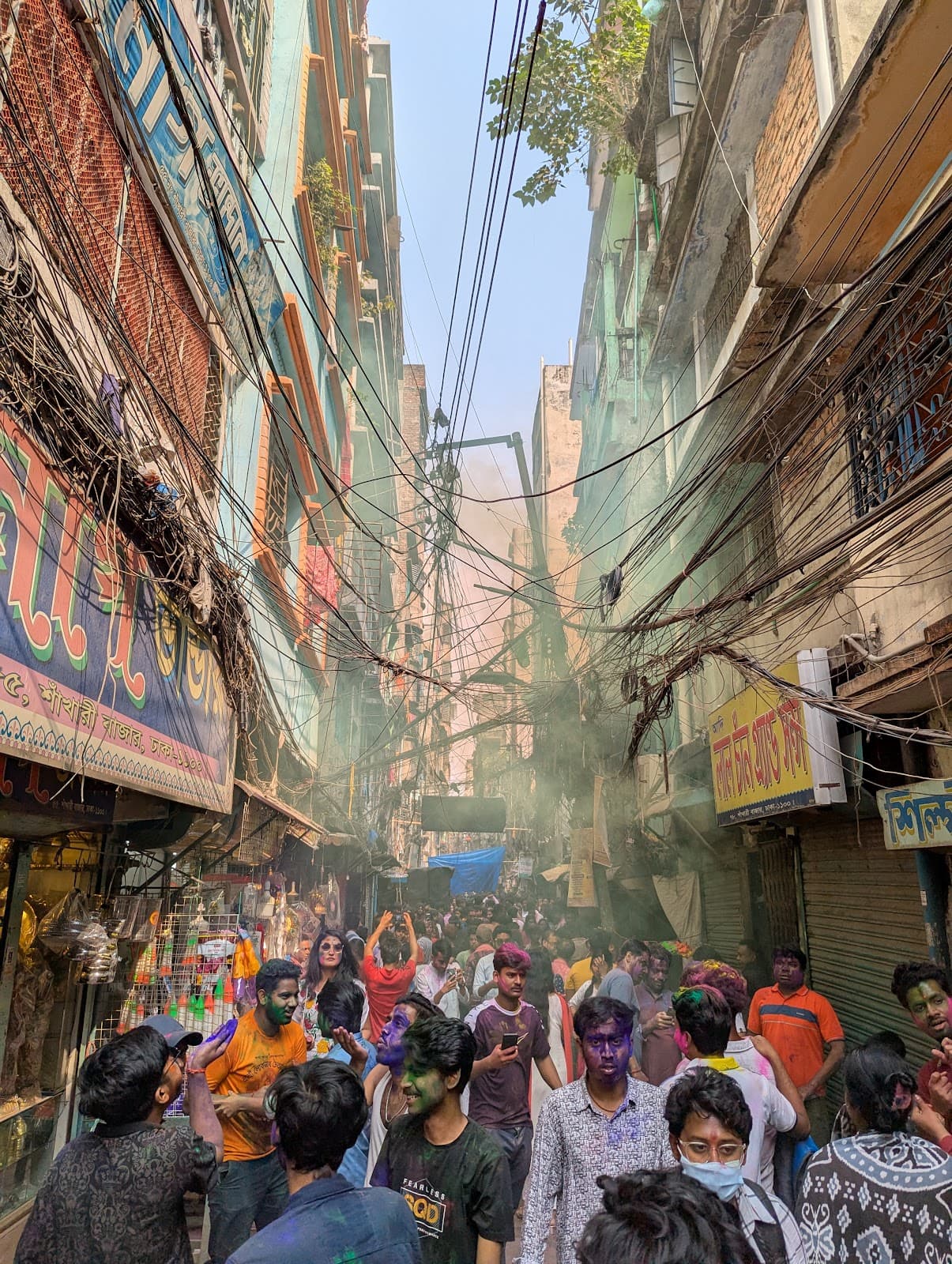


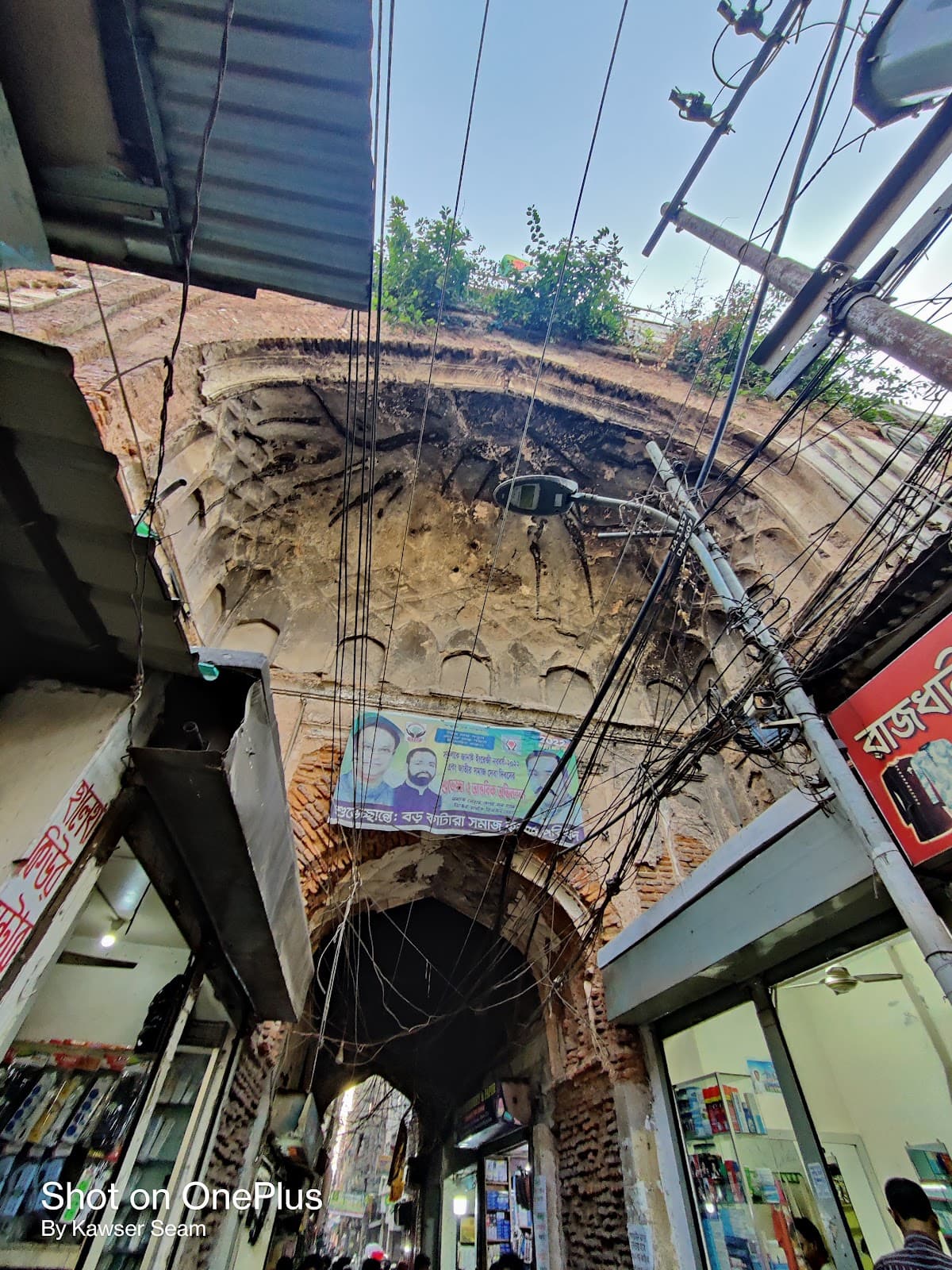
Social
from TikTok, Instagram & Reddit